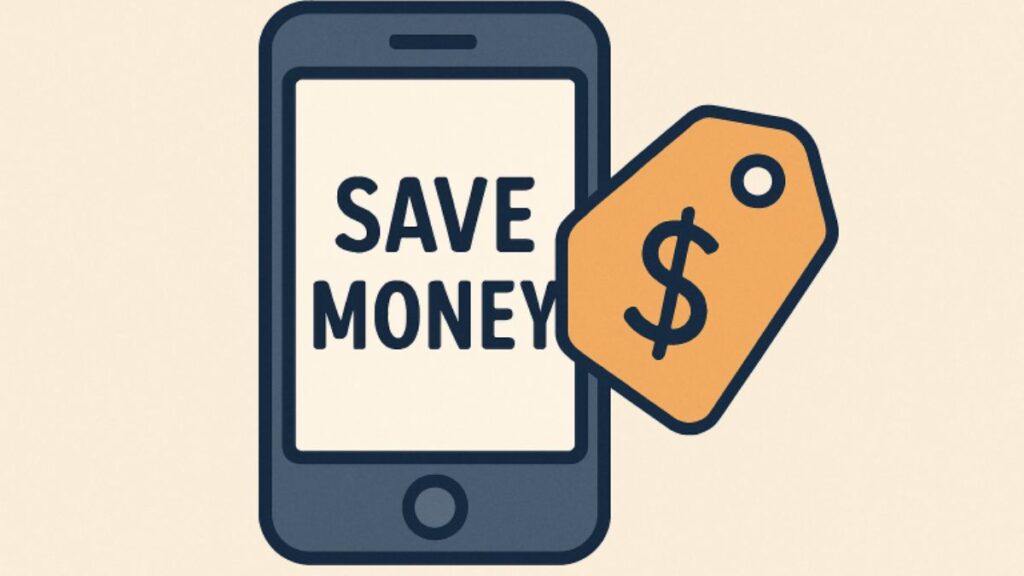Staying connected is more important than ever, but high wireless bills don’t have to be the norm. The market is overflowing with options, making saving money on their phone plans easier without sacrificing quality or reliability. Whether you’re juggling multiple lines, have minimal data needs, or want to avoid overpaying for services you don’t use, practical strategies can help you cut costs and get the most value for your budget. One savvy approach is leveraging deals like Verizon Wireless coupons to reduce expenses while enjoying premium service.
Understanding your data needs, making informed choices, and taking advantage of provider promotions can transform your wireless expenses into a manageable part of your monthly budget. The right plan is out there—you just need the tools and knowledge to uncover it.
Many people find savings hiding in plain sight, such as switching to better-suited service tiers or reconsidering whether an unlimited plan fits their lifestyle. Shopping smart and adopting a proactive approach means your mobile connectivity stays strong, not your bill.
If you’re unsure where to start, there are tried-and-true methods for reviewing your wireless spending and finding a plan that fits both your digital life and your wallet. With a few tweaks to your routine and a willingness to explore the options, it’s possible to cut your wireless costs and keep your plan working for you, not the other way around. Third-party resources, including reputable guides from Tom’s Guide, offer comprehensive breakdowns for those looking to dive even deeper into savings.
Assess Your Data Usage
Understanding your actual data consumption is the first step toward savings. Too often, customers pay a premium for unlimited plans when they consistently fall well below those data caps. By digging into your monthly statements or reviewing usage statistics using your carrier’s app, you can select a plan that aligns more closely with your needs—often for a fraction of the cost. For instance, downgrading from unlimited to a 5GB plan could cut your bill substantially, considering many carriers charge a premium for unlimited data. According to Consumer Reports, knowing your data habits is the key to avoiding wasteful spending.
Consider Prepaid Plans and MVNOs
Exploring prepaid plans and Mobile Virtual Network Operators (MVNOs) is a proven way to keep costs in check. MVNOs like Mint Mobile, Visible, and Consumer Cellular lease space on major networks while passing significant savings on to their customers. These flexible carriers typically offer lean, customizable plans, letting you avoid paying for extras you don’t need. Prepaid options, meanwhile, help you sidestep credit checks and lengthy contracts, offering predictable monthly costs and frequently better prices than postpaid plans. Switching to one of these alternatives can save hundreds of dollars per year for many users, as reported by Wirecutter.
Leverage Discounts and Promotions
Don’t overlook discounts your carrier may offer for setting up autopay or going paperless—many major providers give $5 to $10 per-line discounts just for these actions. Investigating if your employer, university, or membership organization negotiates special rates with major carriers is also worthwhile. Groups like AARP, AAA, and others often provide exclusive deals. Taking a few minutes to see what you qualify for can yield long-term savings, turning a routine bill into a source of financial relief.

Opt for Family or Group Plans
Family or group plans represent one of the most direct routes to savings. Carriers structure these deals to lower the rate per line as you add more people, making it possible for families, friends, or roommates to band together and dramatically reduce their wireless costs. Some innovative programs, like Visible’s “Party Pay,” even allow unrelated users to combine accounts for mutual savings. As emphasized by Tom’s Guide, these plans are often the sweet spot between robust coverage and affordable pricing.
Bring Your Own Device
Buying a phone through your carrier frequently involves hidden costs or high monthly installments. Bringing your own device (BYOD) is a cost-conscious alternative: Most carriers offer discounts or signing incentives if you switch to a phone you already own. This lets you save by sidestepping both retail markup and unnecessary upgrade cycles while sticking with a phone you already love and trust.
Regularly Review Your Plan
Our mobile habits change as work, travel, and communication patterns evolve. That’s why reviewing your plan at least once a year is vital. If you consistently use less data than your plan provides or notice new fees or surcharges, take action by switching to a more efficient tier. Many carriers make it easy to view your past usage and quickly adjust your monthly allotment. Staying proactive keeps your spending lean and ensures you aren’t subsidizing services you no longer need.
Utilize Wi-Fi Whenever Possible
Wi-Fi can be your most important tool in reducing data charges. By subscribing to home broadband and connecting to free Wi-Fi at work or in public spaces, you dramatically lower your reliance on cellular data, which helps prevent costly overage fees or throttling. Frequent Wi-Fi use is compelling for streaming video or large downloads, allowing even modest data plans to stretch further every month.
Negotiate a Better Deal
Negotiating with your wireless carrier might seem daunting, but it can yield real results. If you find better promotions from competitors or your bill has crept higher, contact your carrier’s retention department and ask about available discounts, plan matching, or even credits for long-term loyalty. Many companies are willing to offer temporary deals to keep you as a customer, making a single phone call well worth the effort.
With these tips, you gain more than just savings: you also develop a mobile plan strategy that adapts to your life, not the other way around. The wireless market is more competitive and flexible than ever—by monitoring your usage and making wise choices, you keep your phone and finances in great shape.






